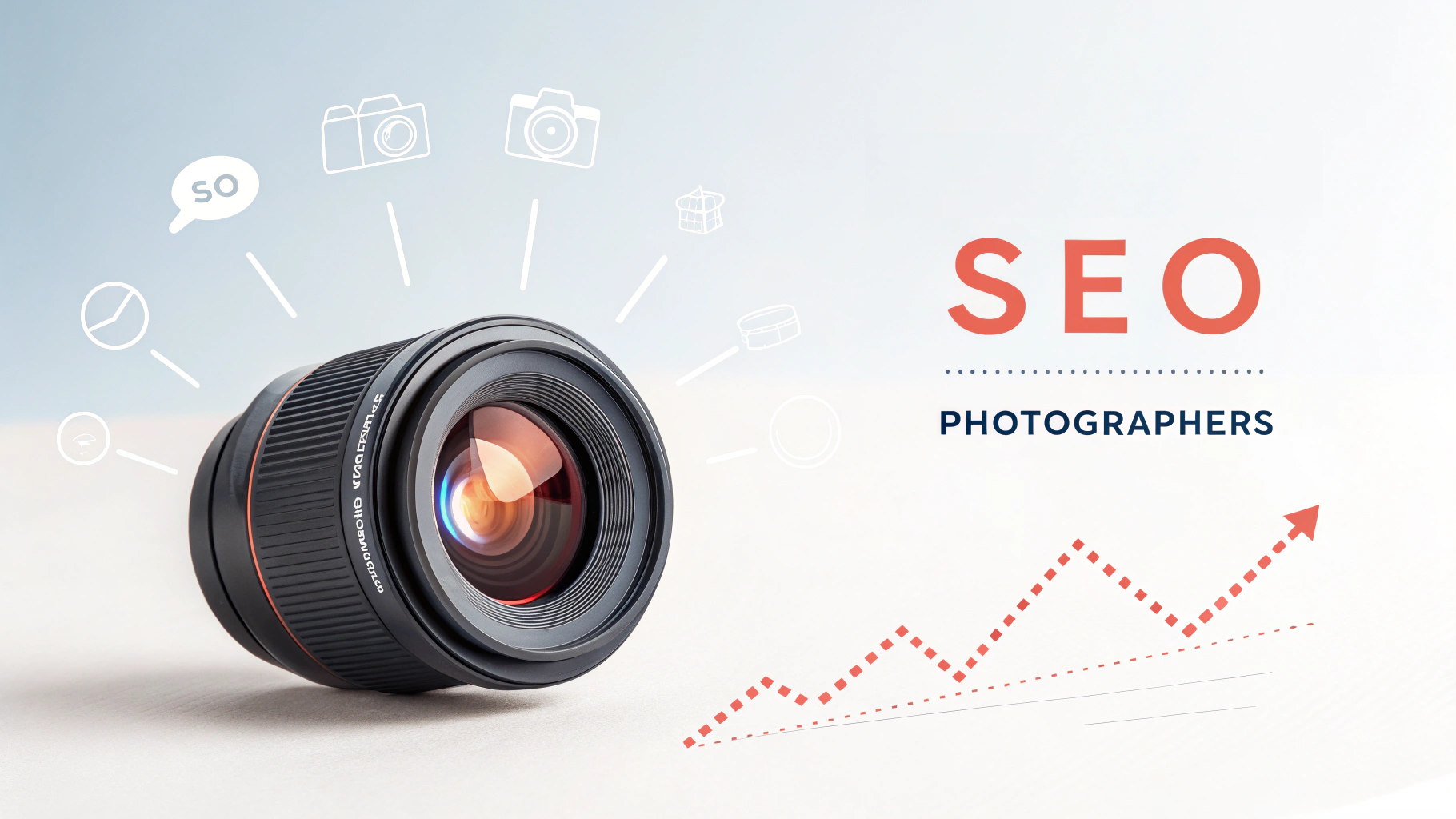
From a 20-Year SEO Veteran: Proven, Underutilized Tactics for Long-Term Organic Growth!
The photography niche is one of the most visually saturated markets online. Beautiful images alone won’t bring traffic. If you’re not pairing your visual work with smart, targeted SEO, you’re leaving money—and bookings—on the table.
I’ve been in SEO for two decades. In that time, I’ve worked with photographers, designers, and visual artists who struggle to get found online despite having incredible portfolios. The truth is: Google’s bots don’t care how your site looks—they care how it’s structured. And most photography websites are poorly structured.
This guide doesn’t just rehash beginner-level tips. It distills 20 years of real-world SEO knowledge into 10 sharp, actionable steps tailored for photographers. These aren’t theories. They’re battle-tested, ROI-driven practices I’ve used to help creative professionals consistently outrank their competitors.
You won’t find generic advice here like “use keywords” or “optimize meta tags.” You’ll get field-tested strategies that work in 2025, even in crowded local markets.
Let’s get into it.
1. Create Individual Service Pages for Each Photography Type
Most photographers dump everything into a single “Services” page. That’s a mistake.
Why One Generic Page Fails
Google ranks pages, not websites. When you combine all your services on one page, you force Google to guess what the page is about. That weakens your relevance and reduces your chances of ranking for any one service.
On top of that, clients don’t search generically. They search specifically:
- “Maternity photographer in Austin”
- “Affordable wedding photography Brooklyn”
- “Real estate photographer for Airbnb listings LA”
If you only have a broad “Services” page, you’re invisible for all these targeted searches.
What to Do Instead
Create a separate page for every core service you offer. Think of each one as a landing page aimed at a specific search intent. For example:
- /wedding-photography/
- /product-photography/
- /family-portraits/
- /drone-photography/
Each page should include:
- A clear H1 with your target keyword (e.g., “Wedding Photography in San Diego”)
- Descriptive intro text that mirrors real search phrasing
- 1–2 short paragraphs that describe what makes your service unique
- A small, optimized gallery specific to that service
- FAQs related to that niche
- A location-based CTA (e.g., “Available for weddings in San Diego, La Jolla, and Coronado.”)
This structure gives Google a crystal-clear signal: this page is about this type of photography in this location.
From Experience
In lower-competition or underserved niches, I’ve seen this change help photographers break onto page one. But let’s be clear—this alone won’t get you top 5 rankings in competitive markets. You’ll still need supporting elements: relevant internal links, solid on-page content, and yes, authoritative backlinks.
That said, most photographers don’t even have this foundational structure in place. Without service-specific pages, you’re not even in the running. It’s the bare minimum if you want to start competing—and it sets the stage for everything else that comes next.
2. Use EXIF Data Strategically (But Don’t Count On It)
Photographers love talking about EXIF data. Some even believe it’s a secret SEO hack. It’s not—but it does have its place.
What Is EXIF Data?
EXIF (Exchangeable Image File Format) data is metadata embedded in image files. It includes:
- Camera make and model
- Date and time
- Geolocation (if GPS is enabled)
- Lens settings, shutter speed, ISO, etc.
This data is often automatically attached by your camera or phone when you shoot a photo.
Does Google Use It?
Google has said that while it can read EXIF data, it doesn’t rely on it for ranking. That means it won’t boost your rankings on its own. But in my experience, it still plays a subtle role in three areas:
- Image indexing – Helps provide contextual signals, especially for local images.
- Reverse image search – Adds detail for matching visual assets.
- Entity association – Assists Google in connecting a photo with a real place or photographer (indirectly, at best).
In local SEO, every small signal matters. If you’re uploading original images, you might as well retain relevant EXIF data—especially geo-tags and timestamps—before compressing and uploading.
Just Don’t Rely On It
EXIF data won’t fix thin content, poor site architecture, or lack of backlinks. Think of it like a handshake—not a resume. It introduces your images to Google but doesn’t convince anyone to rank them.
Pro Tip
Before uploading:
- Add location data to your best photos using a tool like GeoImgr.
- Don’t strip metadata during export unless necessary.
- Compress images with tools that retain metadata (e.g., ShortPixel with proper settings).
3. Build a “Location + Niche” Hub Architecture
Photographers often focus on visuals, but ignore how their site is structured. That’s a problem—because your site structure shapes how Google understands your expertise, location relevance, and content relationships.
What’s a Content Hub?
A content hub is a central page built around a core topic or theme, with supporting pages linked underneath it. Think of it like a digital “cluster.”
For photographers, a smart angle is to create hubs by combining:
- Your location
- A specific photography niche
Examples:
- /sydney-wedding-photography/
- /los-angeles-real-estate-photography/
- /miami-beach-family-photographer/
This hub should serve as the pillar page. It can include:
- A short intro about your work in that niche + city
- Internal links to related galleries, blog posts, and testimonials
- Embedded reviews, FAQs, or behind-the-scenes videos
Why It Works
Google wants to rank subject-matter experts. This structure signals topical depth and location authority. You’re telling Google:
“I don’t just do photography. I specialize in this kind of photography in this place.”
I’ve used this method to help local service businesses—including photographers—grow organic traffic by 60–200% without building a single backlink. The traffic doesn’t just increase—it becomes more qualified.
Common Mistakes to Avoid
- Don’t create hubs with thin content. A 200-word intro and a gallery isn’t enough.
- Don’t link to unrelated blog posts. Keep the cluster tightly focused.
- Don’t keyword-stuff the URL or headings. Use natural phrasing.
Pro Tip
Once your hub is live, interlink it from:
- Your homepage
- Relevant blog posts
- Footer or navigation (if important for conversions)
This builds authority and improves crawlability. Over time, your hub becomes a magnet for long-tail searches like “best wedding photographer in Surry Hills” or “elegant garden wedding photos Sydney.”
4. Stop Blogging About Yourself — Write What Clients Are Searching For
Most photographer blogs read like journals. “Behind the scenes of Katie & Mark’s wedding” or “A foggy morning shoot at Bondi.” Beautiful? Sure. Useful for SEO? Not even close.
The Problem
Photographers often blog for other photographers. Or worse, they treat their blog like a portfolio with a few extra words. That content rarely ranks because:
- It doesn’t match search intent.
- It lacks depth.
- It’s not optimized for keywords that potential clients use.
What Clients Actually Search
Here’s what real search queries look like:
- “Best engagement photo locations in Melbourne”
- “What to wear for family portraits”
- “How to pose for headshots”
- “How long do wedding photos take?”
- “Do photographers provide RAW files?”
These are questions and pain points. If you write blog posts that answer them clearly and locally, you tap into a consistent stream of organic traffic that converts.
What to Do Instead
Blog like a problem-solver, not a storyteller. That means:
- Use keyword research to find “question-based” or “location-specific” queries.
- Create listicles, how-tos, and location guides with substance.
- Add original images from your shoots as examples to build relevance and time-on-page.
If you’re unsure what terms clients are actually typing into Google, start by identifying SEO keywords that align with your photography niche and location. This guide to SEO keywords for photographers breaks it down in detail, with real examples and search intent insights tailored for client acquisition.
If you’ve already got behind-the-scenes posts, don’t delete them. Just optimize the ones with potential or merge thin entries into stronger, intent-driven pieces.
For a deeper dive into how you can find the right keywords and create content that drives traffic, KeywordProbe can help you uncover the terms your clients are actively searching for.
5. Turn Your Gallery Pages Into High-Intent Landing Pages
Most photographers treat their gallery pages like pretty brochures. Tons of visuals, no text, no structure, no SEO. That’s a missed opportunity—because galleries are often among the most-visited pages on a photography site.
Why Galleries Matter for SEO
Google can’t “see” images the way humans can. If your gallery pages are just a grid of JPEGs with no supporting text or metadata, they’re basically invisible to search engines. Worse, visitors land on those pages and bounce because there’s no context or clear call to action.
What to Do Instead
Think of your gallery as a conversion-focused landing page. Keep it visually strong, but add just enough text and structure to give Google (and humans) what they need.
Here’s how to level it up:
✅ Add a Clear, Searchable Title
Use a specific H1. Not “Gallery” or “Portfolio.” Try:
- “Rustic Outdoor Weddings in Blue Mountains”
- “Modern Product Photography for Fashion Brands”
✅ Write a Brief Introduction
Start with 2–3 sentences describing what the gallery is, who it’s for, and where it was shot. Mention your niche and location naturally. No keyword stuffing—just clarity.
✅ Use Alt Text That Describes the Image + Context
Don’t write “DSC-29385.jpg” or “wedding.” Be specific:
- “Bride walking down aisle at Centennial Park Sydney wedding”
- “Overhead flat lay of skincare products on marble background”
This helps with both SEO and accessibility.
✅ Add a Call-to-Action Below the Gallery
Guide visitors to the next step. Example:
“Like what you see? I’m currently booking for Summer 2025. Let’s talk about your day.”
This keeps the momentum going and turns casual viewers into warm leads.
The Path to Sustainable Photography SEO Success
The photography market isn’t getting any less crowded. But most of your competitors are making the same fundamental mistakes—beautiful portfolios with broken SEO fundamentals. That’s your opportunity.
I’ve watched photographers transform their businesses by implementing just three of these tactics. The full system? It’s a game-changer. What separates thriving photography businesses from struggling ones often isn’t talent—it’s visibility.
Remember that SEO isn’t about tricking algorithms. It’s about structuring your online presence to clearly signal your expertise in specific photography niches and locations. Every service page, hub structure, and gallery optimization works together to tell Google exactly who you are and who you serve.
Don’t try to implement everything at once. Start with service-specific pages, then move to optimizing your galleries as landing pages. Track your rankings and organic traffic to see what’s working in your specific market.
The photographers who dominate search results aren’t necessarily the most talented—they’re the ones who understand that stunning visuals must be paired with strategic SEO to be discovered. In my two decades helping creative professionals grow their businesses, I’ve seen this formula work consistently across markets worldwide.
Your move now. Pick one tactic from this guide and implement it this week. In this industry, the difference between struggling and thriving often comes down to being findable when clients need you most.





